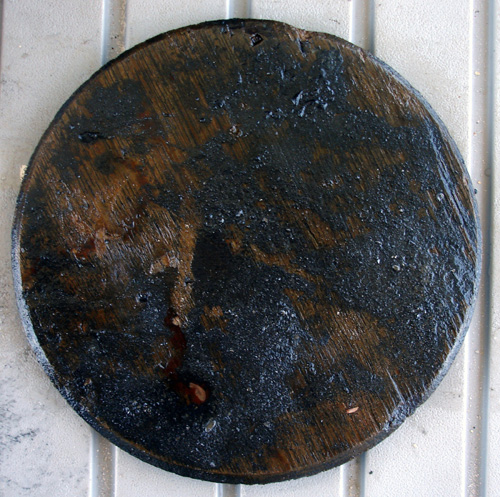
Today’s discovery: the head, or lid, from a small keg, barrel, or cask. This could have been used to store liquid or dry goods on the ocean-going sailing vessel which plied St. Augustine waters in the 1800s.
I thought I would post a quick update and share some of the finds we have made while conducting archaeological excavations on the unknown shipwreck offshore St. Augustine. LAMP is the research arm of the St. Augustine Lighthouse and Museum, and our archaeological investigations are focused on increasing our understanding of the rich maritime history of our Nation’s oldest port.
Material culture, the artifacts we find, are important clues to life on board this ship which plied the waters of the port of St. Augustine probably sometime in the nineteenth century. They are the physical remains of the items of everyday use that were made and used by the crew of this vessel, the physical remains of the types of goods that were coming to and from St. Augustine, and the physical remains of the ship itself and its hardware. They are the clues that help us as archaeologists interpret and hopefully better understand the past.
A number of us working this wreck have characterized it as “artifact poor” and “hull rich.” By that we mean that we are finding relatively few artifacts, but also that we have a very well preserved hull with lots of interesting features that will undoubtedly lend insight into the design, construction, and operation of this ocean-going vessel. But, in recent days, we have made some more artifact discoveries. Here is an overview of the kinds of things that we are finding on our unknown shipwreck, deep down within the hull timbers, below sand and ballast rocks.
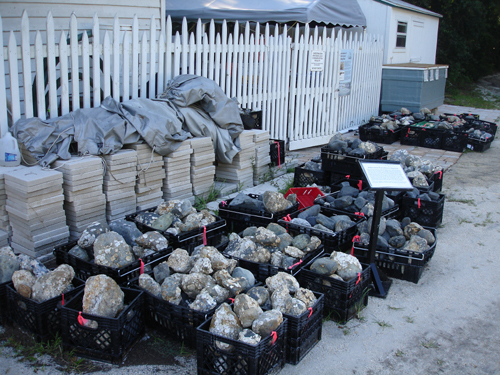
Speaking of ballast, we have found more ballast by far (and by any measure) than any other category of artifacts. Ballast stones were stowed deep in the hull to provide weight which would lower the ship’s center of gravity, an important job considering how top-heavy ships with tall masts and heavy rigging were. We have cut a trench through the pile of ballast stones on our site, which has revealed hull remains and artifacts. We are weighing and counting all stones by meter-square unit (there are nine of these excavation units in our trench). Some ballast will be retained for analysis and display, though most will be returned to the site when we are finished recording all exposed hull remains, and used to cover and protect these features.
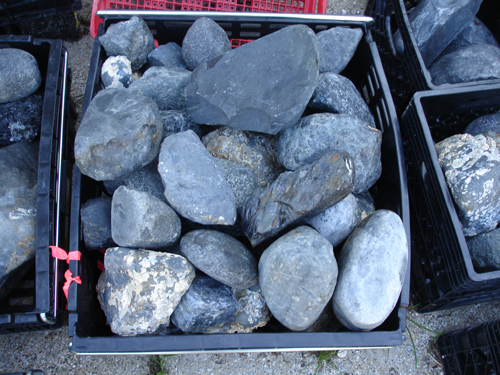
Rocks, rocks, and more rocks . . .
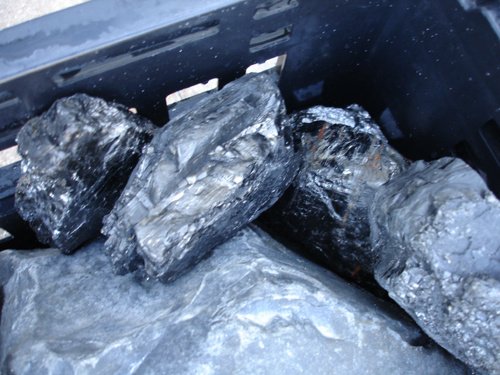
Amid the ballast rocks are lots sizable chunks of coal. Divers also have encountered innumerable tiny chips and fragments of coal. This could have been the remains of a previous cargo, strewn about the lowermost parts of the hold, or it could be that we excavated through a coal locker where fuel for the galley fire and officer’s heating stoves were stored. Alternatively, the coal could be intrusive from the steamboat wreck located very close by.
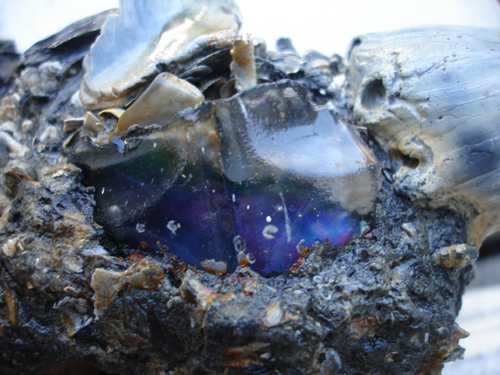
Sometimes there are interesting artifacts stuck directly to the ballast stones. Something made of iron, possibly a fastener (nail or bolt) from the hull, ended up next to this particular stone, forming a concretion. Stuck to the concretion is a piece of glass, which was overlooked in the dark on the seafloor, but noticed by lab volunteers counting each stone.
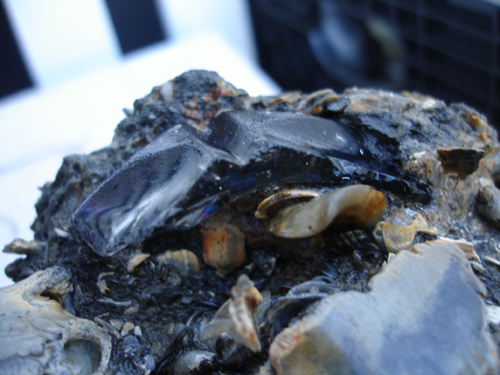
This glass shard is impressed or molded with a unique geometric design. Its function and date at this time remain unknown, but it does seem to bear a similar molded design as was seen on whale oil lamps dating to between 1840s-1860s.
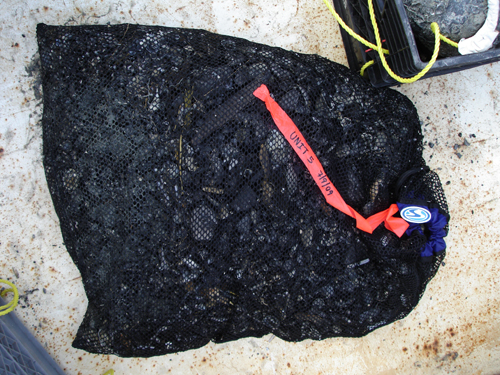
In addition to rocks, we have brought home a lot of shell hash. When we dredge we screen all sediment we vacuum from the seafloor by forcing the exhaust through a mesh bag. After a long dive excavating sediments from a unit, we end up with a big bag of shell hash like this. Often there are numerous bits of wood, coal, and other human-worked material in the dredge spoil.
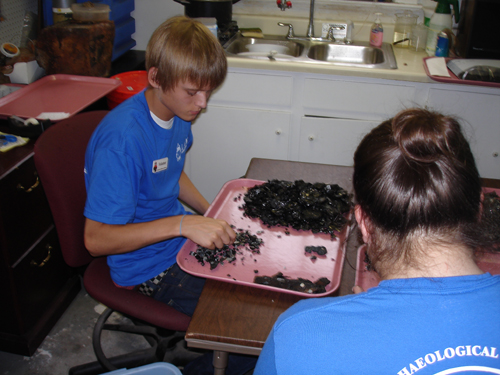
Back in the lab, volunteers sort through the dredge spoil looking for tiny chips of coal or any other artifacts that might have been overlooked by the excavators in the murky waters of our unidentified wreck. If anyone out there is interested in helping sort through this shipwreck material in search for small artifacts, please give our Volunteer Coordinator Debe Thompson a call at (904) 829-0745 ext. 212 or email her here.
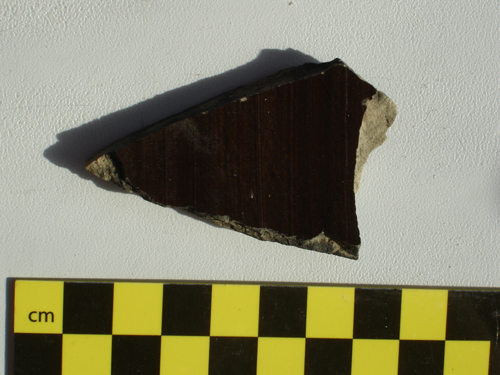
In Unit 6, while drawing hull remains, a diver noticed something sticking out from the wall of the excavation unit–it turned out to be this sherd. It appears to be a utilitarian stoneware piece with a lovely brown glaze on its interior.
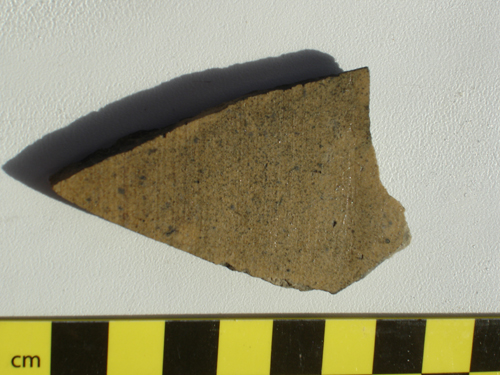
We have not yet spent much time analyzing this sherd so we haven’t yet identified its type and date range, but it certainly appears to date to the nineteenth century.
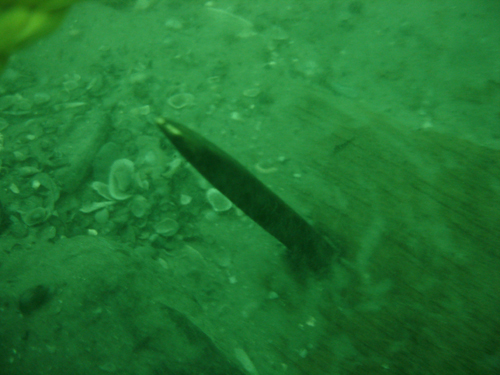
This underwater photograph, taken in one of our few days of good visibility, shows a copper-alloy planking spike, protruding upwards from the interior surface of an outer hull plank. Another square-shanked spike similar to this one was recovered from another plank. This is a very typical fastener found on nineteenth-century shipwrecks.
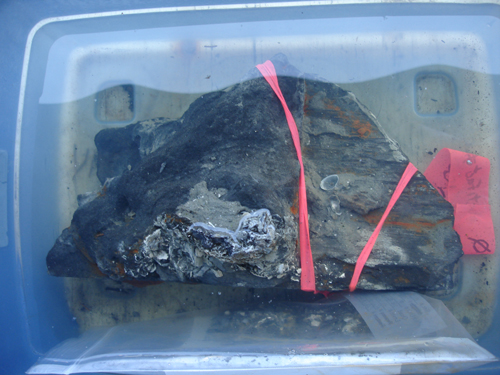
This is a large concretion, which again represents one or more iron objects which have formed a concrete-like conglomerate around their bodies. The iron artifacts may remain inside this object, or they may have rusted away to leave hollow molds which might be cast to create perfect replicas. There might be other small artifacts stuck within the concretion as well. This particular concretion formed adjacent to a stringer longitudinal timber, and close to the bulkhead in Unit 5.
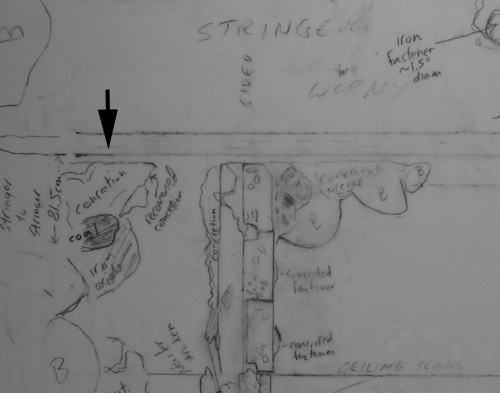
This drawing shows the concretion as it was drawn in place at its original location next to a large timber stringer. Impressed into one surface of this concretion are the wood grain and tool marks of the stringer. These tool marks have been studied underwater by LAMP archaeologist Brendan Burke, who identified them as band saw marks. This device was invented in 1808 and became more popular in ensuing decades. We should be able to preserve these marks by casting the exterior surface of this concretion.
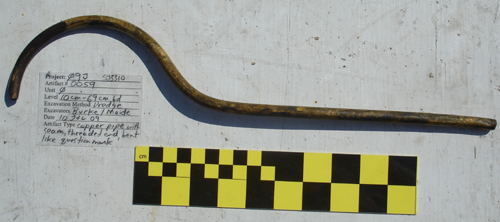
Last week we came across this brass or copper-alloy tube in Unit 0. It is bent somewhat like a question mark.
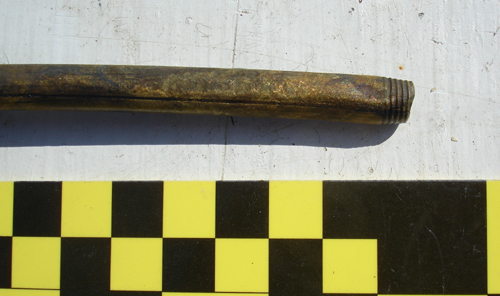
A seam runs along its entire length, and one end is threaded. We have not yet identified this object. It could be intrusive material from the neighboring steamship wreck, or it could be part of a lighting system.
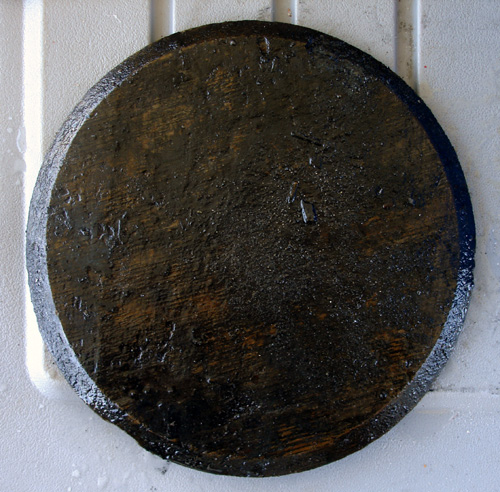
So we have now come full circle, back to today’s discovery. This is the head of a wooden barrel, cask, or keg. It could have held cargo or ship’s stores, water or gunpowder or flour or nails.
Despite our increasing number of artifacts on the wreck, her identity still remains a mystery. With any luck our ongoing artifact analysis, along with the finds to be made soon on the seafloor or in the lab, will shed further light on this vessel and one day lead to its identification.
As always, our gratitude goes to the State of Florida’s Bureau of Archaeological Research and Division of Historical Resources, who have provided us with research permits and Special Category Grant funding to make this research possible.

